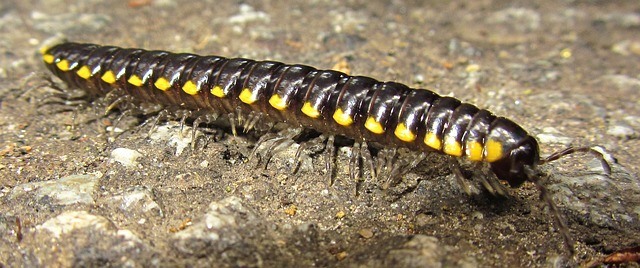Centipede And Millipede Difference
Centipedes and Millipdes How to tell them apart How do I tell the difference between a centipede and a millipede?The centipede ('hundred legs') and millipede ('thousand legs')have various similarities, reflecting their biological relationship. Both, forinstance, have common evolutionary roots, which extend back for more than 400million years.

Differences in anatomy and appearance. The Centipedes have long, segmented and exoskeletal bodies. Here are some helpful tips from the Worcester pest control professionals at Big Blue Bug to help you tell the difference between millipedes.
Although related to lobsters, shrimp and crayfish, both are creaturesof the land. Both have elongated, exoskeletal, segmented bodies.

Both molt, extendingthe segments of their bodies. Both may live for several years. The centipedeand the millipede also, however, have distinctive features. Comparison of Defensive StrategiesThe centipede uses two modified legs on the last segment of its body trunkand two modified venomous legs on the first segment for defense; the millipedeuses glands that run along its trunk to produce - and sometimes squirt - noxiouschemicals that discourage predators. Comparison of MobilityThe centipede, with comparatively long legs, can move swiftly for short distancesin a sprint to capture prey or elude predators; the millipede, with its shortlegs, can only move laboriously as it forages in soil and plant litter for food.
Monster Only2. Index of Maps by Bonus Rank2. Disgaea 2 friday mk2.
Comparison of HabitatBoth being susceptible to desiccation, a centipede seeks out stony crevices,fallen leaves, rotting logs, and the damp nooks in your home; the millipede favorsdecaying vegetation. Comparison of ForagingAs a predator, the centipede feeds on animals as diverse as insects, spiders,reptiles and birds; as scavengers and herbivores, most species of millipede feedon decaying plant material and sprouting seedlings. ReproductionThe centipede male deposits sperm bundles, entrusting females to find themand impregnate themselves. By contrast, the millipede male and female join inmating. Centipede and millipede females both typically lay their eggs in undergroundnests.
The females of some centipede species abandon their eggs, leaving thebroods to manage on their own; the females of other species nurtures their broodsuntil the offspring can manage on their own. The females of all the various millipedespecies remain with their eggs until they hatch, and they nurture the offspringuntil they can manage on their own.Author: Jay SharpCommon Questions About CentipedesHealth and Medical Disclaimer. Health and Medical DisclaimerThe information provided on this web site and by this web site through content provided by Authors or third party providers, and in other sources to which it refers, is PROVIDED FOR INFORMATIONAL PURPOSES ONLY and should not be used to diagnose or treat a health problem or disease.Information provided at and by DesertUSA is NOT A SUBSTITUTE FOR PROFESSIONAL MEDICAL CARE. If you have a medical concern, or suspect you have a health problem you should consult your primary doctor or specialist.If you cannot agree to this Health and Medical Disclaimer, you are not permitted to use this web site and should exit immediately.
Difference Between Centipede and MillipedeThere are different kinds of arthropods. They are members of the phylum Arthropoda and it is the largest phylum in the animal kingdom.